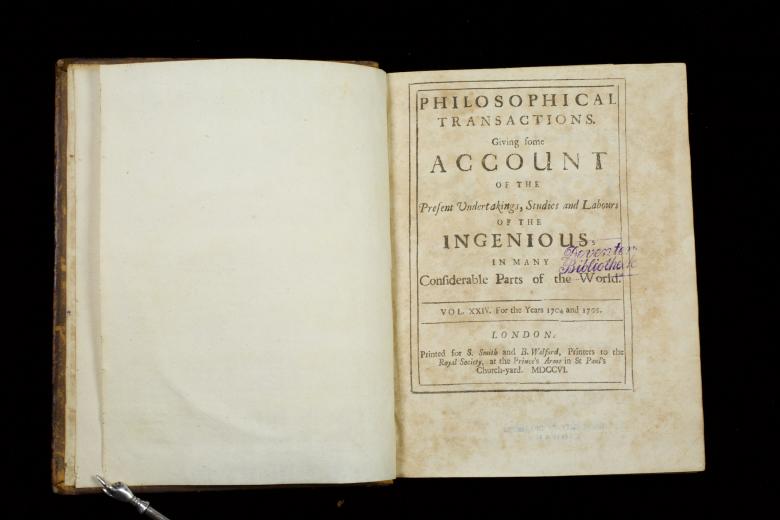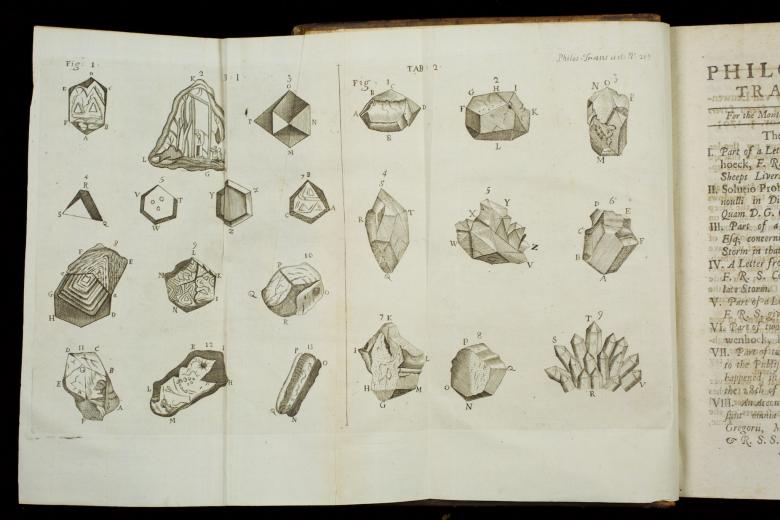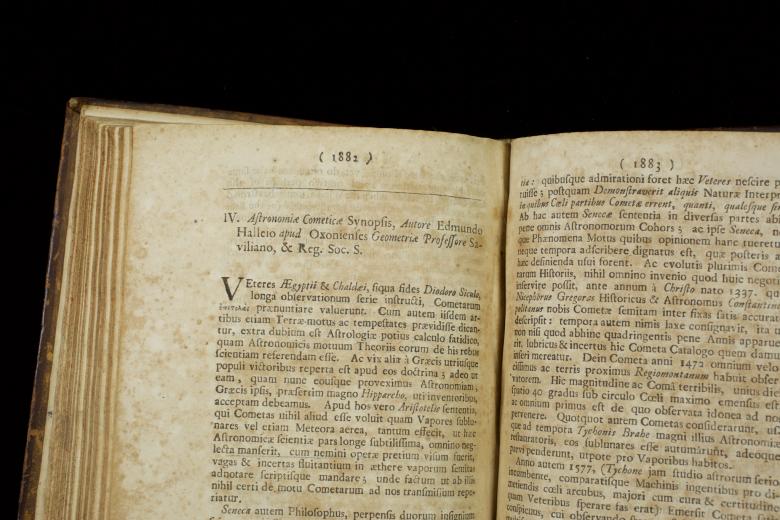Citation
Item Location
In this article, Halley used Newton’s laws to determine the gravitational effects of Jupiter and Saturn upon passing comets. This enabled him to show that the comet we now know as Halley’s comet follows an elliptical orbit. This was the first comet determined to be periodic. From records of its appearance in 1531, 1607, and 1682, Halley surmised that it returns every 76 years and predicted its next appearance in 1758.
Halley’s comet was spotted on Christmas day, 1758. Confirmation of the period of Halley’s comet marked the first time any non-planetary object was shown to orbit the Sun. Comets had been an enigma in Galileo’s generation, often regarded as more consistent with the system of Tycho than with Copernicus (see the Controversy over the Comets exhibit in Bizzell Memorial Library). But after Halley they were regarded as a striking confirmation of the Newtonian “system of the world.”








